Text
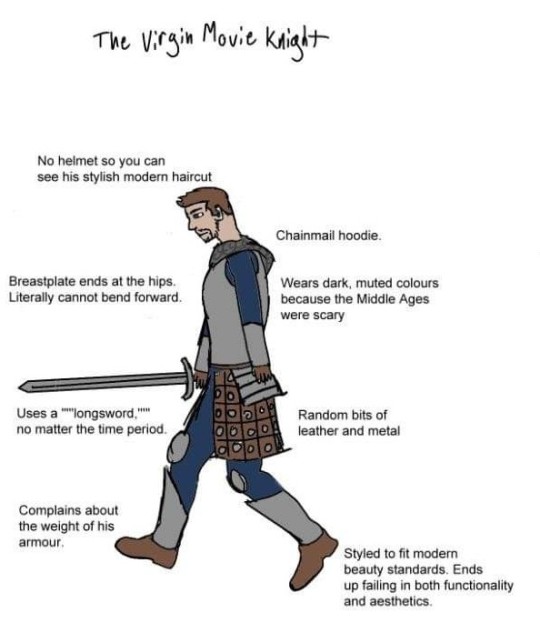

46K notes
·
View notes
Text



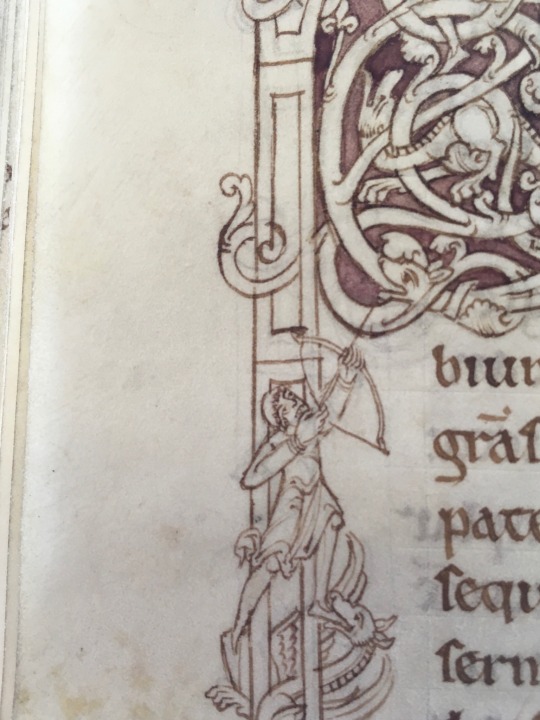
20.07.2022 | 10/100 days of productivity
Last backdated post! Went to look at MS Hunter 438 (V.5.8) on my last full day in Glasgow. It's a 12th/13th century copy of Bede's commentaries on Acts. It ended up not being super relevant to my research, but it was very cool nevertheless!
18 notes
·
View notes
Photo

from page 112 of a mid-ninth century manuscript of Priscian’s Institutes of Grammar; at the top of this page is a poem written by an Irish monk. Source.
Original Irish
Is acher ingáith innocht
fufuasna faircggae findḟolt
ni ágor réimm mora minn
dondláechraid lainn oua lothlind
English Translation
Bitter is the wind tonight;
It tosses the ocean’s white hair.
Tonight I fear not the fierce warriors of Norway
Coursing on the Irish sea.
3K notes
·
View notes
Text
guy who has only read medieval literature experiencing anything: getting a lot of medieval literature vibes from this
5K notes
·
View notes
Photo
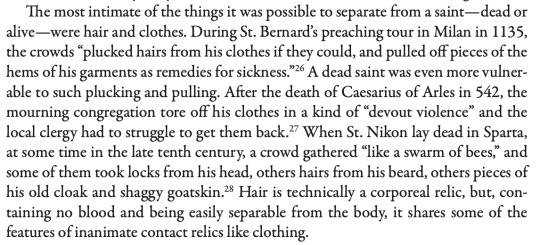
Robert Bartlett, excerpt from Why Can the Dead Do Such Great Things?: Saints and Worshippers from the Martyrs to the Reformation
69 notes
·
View notes
Photo

#nugae#art history#medieval art#renaissance art#ars#sancti#saint sebastian#saints#medieval saints#iconography#martyrs
171K notes
·
View notes
Text
so shameful that no medieval poet wanted ME to guide them through their sexual awakening journey through the underworld or whatever idk i didn’t read the whole book
2K notes
·
View notes
Photo
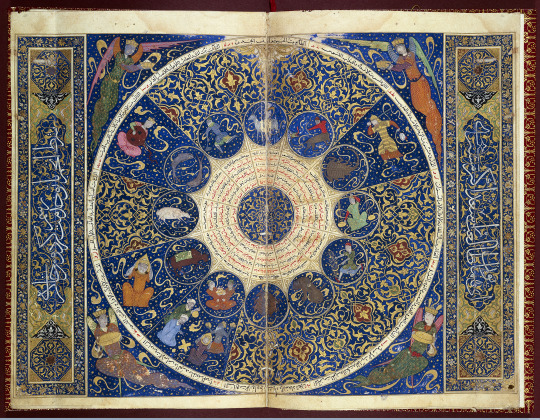

Horoscope, Ancient Iran, by Imad al-Din Mahmud al-Kashi
Showing the positions of the heavens at the moment of Prince Iskandar’s birth on April 25, 1384
17K notes
·
View notes
Photo

Caroline Bynum, excerpt from Fragmentation and Redemption: Essays on Gender and the Human Body in Medieval Religion
322 notes
·
View notes
Text
my preferred pronouns are iste, ista, istud
533 notes
·
View notes
Text
“Consider the Vikings. Popular feminist retellings like the History Channel’s fictional saga “Vikings” emphasize the role of women as warriors and chieftains. But they barely hint at how crucial women’s work was to the ships that carried these warriors to distant shores.
One of the central characters in “Vikings” is an ingenious shipbuilder. But his ships apparently get their sails off the rack. The fabric is just there, like the textiles we take for granted in our 21st-century lives. The women who prepared the wool, spun it into thread, wove the fabric and sewed the sails have vanished.
In reality, from start to finish, it took longer to make a Viking sail than to build a Viking ship. So precious was a sail that one of the Icelandic sagas records how a hero wept when his was stolen. Simply spinning wool into enough thread to weave a single sail required more than a year’s work, the equivalent of about 385 eight-hour days.
King Canute, who ruled a North Sea empire in the 11th century, had a fleet comprising about a million square meters of sailcloth. For the spinning alone, those sails represented the equivalent of 10,000 work years.”
“...Picturing historical women as producers requires a change of attitude. Even today, after decades of feminist influence, we too often assume that making important things is a male domain. Women stereotypically decorate and consume. They engage with people. They don’t manufacture essential goods.
Yet from the Renaissance until the 19th century, European art represented the idea of “industry” not with smokestacks but with spinning women. Everyone understood that their never-ending labor was essential. It took at least 20 spinners to keep a single loom supplied.
“The spinners never stand still for want of work; they always have it if they please; but weavers are sometimes idle for want of yarn,” the agronomist and travel writer Arthur Young, who toured northern England in 1768, wrote.
Shortly thereafter, the spinning machines of the Industrial Revolution liberated women from their spindles and distaffs, beginning the centuries-long process that raised even the world’s poorest people to living standards our ancestors could not have imagined.
But that “great enrichment” had an unfortunate side effect. Textile abundance erased our memories of women’s historic contributions to one of humanity’s most important endeavors. It turned industry into entertainment.
“In the West,” Dr. Harlow wrote, “the production of textiles has moved from being a fundamental, indeed essential, part of the industrial economy to a predominantly female craft activity.””
- Virginia Postrel, “Women and Men Are Like the Threads of a Woven Fabric.” in The New York Times
35K notes
·
View notes
Text
something about mary magdalene not recognising jesus until he calls her by her name makes me crazy i dont even know how to put it into words. its as if in that moment mary remembers all the times jesus has asked her for advice or told her a joke or simply greeted her using that same name and tone and stops weeping because she knows that voice ! she has heard it mutter her name countless of times ! how could she forget !
4K notes
·
View notes
Photo
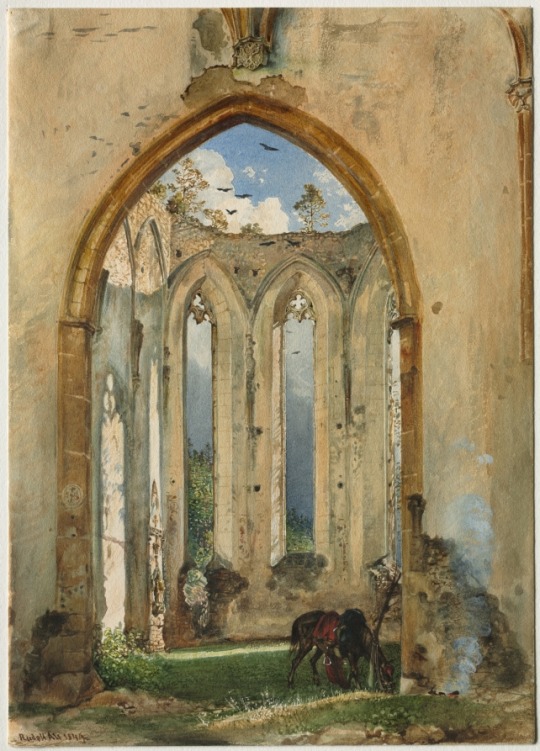
Ruin of a Church, Rudolf von Alt , 1849, Cleveland Museum of Art: Drawings
Size: Image: 25 x 17.8 cm (9 13/16 x 7 in.)
Medium: watercolor with gouache and glazing
https://clevelandart.org/art/1972.99
158 notes
·
View notes
Text
I fukin love 14th century art art because everyone looks so shady and suspicious of ppl around them its AMAZING
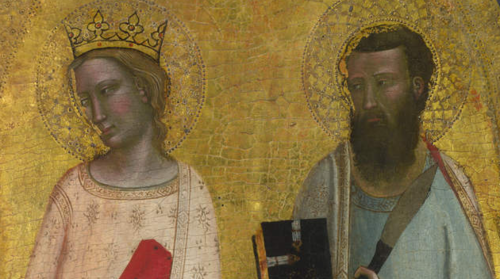


or just like they know something u dont and oh my gdfuck i cant
388K notes
·
View notes
Text
Hellenic History PDFS
A collection of free Hellenic History PDFs, from the Bronze Age to Modern day Greece. If you are interested in works about Ancient Greek Religion, please look through my blog as I give them away freely.
if you struggle with opening a PDF or need a pdf that is locked behind a paywall, use sci-hub to access them.
Bronze Age
Cline, E. H. (2012). The Oxford Handbook of the Bronze Age Aegean. OUP USA. [link]
Dickinson, O. (2007). The Aegean from Bronze Age to Iron Age: Continuity and Change Between the Twelfth and Eighth Centuries BC (1st ed.). Routledge. [link]
Harding, A. (2021). Bronze Age Lives. Berlin, Boston: De Gruyter. [link]
Knapp, B. A., & Dommelen, V. P. (2015). The Cambridge Prehistory of the Bronze and Iron Age Mediterranean (Illustrated ed.). Cambridge University Press. [link]
Taylor, Lindsay, (2019) The Snake Goddess Dethroned: Deconstructing the Work and Legacy of Sir Arthur Evans. Honors College. [link]
Archaic Greece
Dillon, M., & Garland, L. (2010). Ancient Greece: Social and Historical Documents from Archaic Times to the Death of Alexander the Great (Routledge Sourcebooks for the Ancient World) (3rd ed.). Routledge. [link]
Raaflaub, K. A., & Wees, V. H. (2012). A Companion to Archaic Greece (1st ed.). Wiley-Blackwell. [link]
Rayor, D. J., & Johnson, W. R. (1991). Sappho’s Lyre: Archaic Lyric and Women Poets of Ancient Greece (First ed.). University of California Press. [link]
Shapiro, H. A. (2007). The Cambridge Companion to Archaic Greece (Cambridge Companions to the Ancient World). Cambridge University Press. [link]
Classical Greece
Kinzl, K. H. (2010). A Companion to the Classical Greek World (1st ed.). Wiley-Blackwell. [link]
Sourvinou-Inwood, C. (1996). “Reading” Greek Death: To the End of the Classical Period. Clarendon Press. [link]
Hellenistic and Roman Greece
Bugh, G. R. (2006). The Cambridge Companion to the Hellenistic World (Illustrated ed.). Cambridge University Press. [link]
Erskine, A. (2005). A Companion to the Hellenistic World. Wiley-Blackwell. [link]
Stevens, K. (2019). Between Greece and Babylonia: Hellenistic Intellectual History in Cross-Cultural Perspective (Cambridge Classical Studies). Cambridge University Press. [link]
Byzantine Greece
Garland, L. (2011). Byzantine Empresses: Women and Power in Byzantium AD 527–1204 (1st ed.). Routledge. [link]
Hussey, J. M., & Louth, A. (2010). The Orthodox Church in the Byzantine Empire (Oxford History of the Christian Church) (Illustrated ed.). Oxford University Press. [link]
K. (2021). Alexiad (09) by Komnene, Anna [Paperback (2009)]. Penguin Clasics, Paperback(2009). [link]
Lauritzen, F. (2013). The Depiction of Character in the Chronographia of Michael Psellos (Studies in Byzantine History and Civilization). Brepols Publishers. [link]
Neville, L. (2019). Byzantine Gender (Past Imperfect) (New ed.). Arc Humanities Press. [link]
Psellos, M., & Kaldellis, A. (2006). Mothers and Sons, Fathers and Daughters: The Byzantine Family of Michael Psellos (Michael Psellos in Translation) (1st ed.). University of Notre Dame Press. [link]
Psellos, M., Papaioannou, S., & Barber, C. (2017). Michael Psellos on Literature and Art: A Byzantine Perspective on Aesthetics (Michael Psellos in Translation) (1st ed.). University of Notre Dame Press. [link]
Shepard, J. (2009). The Cambridge History of the Byzantine Empire c.500-1492 (1st ed.). Cambridge University Press. [link]
Venetian possessions and Ottoman rule (15th century – 1821)
Davies, S., & Davis, J. L. (2007). Between Venice and Istanbul: Colonial Landscapes in Early Modern Greece (Hesperia Supplement) (Volume XL ed.). American School of Classical Studies at Athens. [link]
Halstead, H. (2018). Greeks without Greece: Homelands, Belonging, and Memory amongst the Expatriated Greeks of Turkey (Routledge Studies in Modern European History) (1st ed.). Routledge. [link]
Naar, D. E. (2016). Jewish Salonica: Between the Ottoman Empire and Modern Greece (Stanford Studies in Jewish History and Culture) (1st ed.). Stanford University Press. [link]
Vionis, A. K. (2013). A Crusader, Ottoman, and Early Modern Aegean Archaeology: Built Environment and Domestic Material Culture in the Medieval and Post-Medieval Cyclades, … Studies Leiden University Press). Leiden University Press. [link]
Zarinebaf, F., Bennet, J., & Davis, J. L. (2005). A Historical and Economic Geography of Ottoman Greece: The Southwestern Morea in the 18th Century (Hesperia Supplement). American School of Classical Studies at Athens. [link]
Modern Greece
Avdela, E., Gallant, T., Papadogiannis, N., Papastefanaki, L., & Voglis, P. (2017). The social history of modern Greece: a roundtable. Social History, 43(1), 105–125. https://doi.org/10.1080/03071022.2018.1394037 [link]
Beaton, R. (2004). Folk Poetry of Modern Greece (Revised ed.). Cambridge University Press. [link]
Featherstone, K., Papadimitriou, D., Mamarelis, A., & Niarchos, G. (2011). The Last Ottomans: The Muslim Minority of Greece 1940–1949 (New Perspectives on South-East Europe) (1st ed. 2011 ed.). Palgrave Macmillan. [link]
Honor, Masculinity, and Ritual Knife Fighting in Nineteenth-Century Greece. (2000). The American Historical Review. Published. https://doi.org/10.1086/ahr/105.2.359 [link]
McGuckin, J. A. (2010). The Orthodox Church: An Introduction to its History, Doctrine, and Spiritual Culture (1st ed.). Wiley-Blackwell. [link]
Books That Cover Multiple Eras
Carney, E. D., & Müller, S. (2020). The Routledge Companion to Women and Monarchy in the Ancient Mediterranean World (1st ed.). Routledge. [link]
James, S. L., & Dillon, S. (2015). A Companion to Women in the Ancient World (Blackwell Companions to the Ancient World) (1st ed.). Wiley-Blackwell. [link]
Llewellyn-Jones, L. (2003). Aphrodite’s Tortoise: The Veiled Woman of Ancient Greece (Illustrated ed.). Classical Press of Wales. [link]
Mackridge, P. (2010). Language and National Identity in Greece, 1766–1976 (Illustrated ed.). Oxford University Press. [link]
Ober;, J. (2021). The Rise and Fall of Classical Greece (The Princeton History of the Ancient World) by Josiah Ober (2015–05-04). Princeton University Press; First Edition edition (2015–05-04). [link]
Petropoulos, J. (2014). Greek Magic (Monographs in Classical Studies) (1st ed.). Routledge. [link]
Rawson, B. (2011). A Companion to Families in the Greek and Roman Worlds (Blackwell Companions to the Ancient World Book 86) (1st ed.). Wiley-Blackwell. [link]
Tziovas, D. (2016). Greek Diaspora and Migration since 1700. Taylor & Francis. [link]
I hope this collections helps y’all with knowing more about Greek History - I haven’t read them all, and that is something I plan to fix. Feel free to recommend more books, knowledge is good!
747 notes
·
View notes
Text
this is from the Vita Radegundis of the nun Baudonivia:

(that attitude. i’d literally let radegund drive her horse over me.)
and this is from her Life by Fortunatus, who clearly had a problem (proceed with caution: very violent self-harm)

gotta love the fact that of the two lives of St Radegund, the one written by a nun is all about her good work for the community and the one written by a monk is torture porn.
#tw self harm#tw gore#tw violence#Medieval women#medieval saints#saints#women saints#hagiography#6#7#st radegund#radegund#medieval misogyny#misogyny
3 notes
·
View notes
Text
gotta love the fact that of the two lives of St Radegund, the one written by a nun is all about her good work for the community and the one written by a monk is torture porn.
#medieval women#hagiography#radegund#saints#women saints#medieval saints#lives of saints#misogyny#medieval misogyny#st radegund#6#7#Francia
3 notes
·
View notes